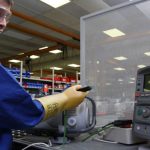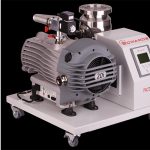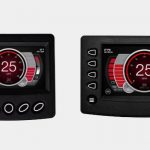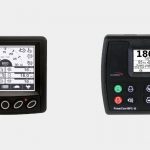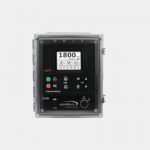When you hear the term ‘proximity sensors’, you know one thing right away: whatever you’re sensing, it had better be proximate — as in, close. You Google ‘proximity sensors,’ and you’ll see vast scope of sensing ranges from two millimeters all the way up to…forty millimeters. It’s easy to assume, then, that the thing you’re sensing had better be no more than a few inches away from your proximity sensor. And you’re right…ish.
What might not be incredibly obvious at first brush is just how easy it is to bring the distant object to the sensor, in a manner of speaking. Or, more accurately, you can bring a proxy of the distant object to the sensor — turning it into a proximity proxy sensor.
Side note: before we continue, let’s note precisely what we’re talking about below: an inductive proximity sensor is a metal coil with electricity oscillating within the coil, causing an electromagnetic field. If a ferrometallic object moves through the field, it causes an electromagnetic feedback which forces the oscillation of the electricity to slow down, which triggers the sensor.
For example, let’s say you have a conveyor belt, and you want to know whenever a box passes through a certain location on the belt — but there’s no convenient place to put a proximity sensor near the belt itself. If, instead, you put a simple wheel on the edge of the belt where it will be turned by a box as it passes by — and then attach that wheel to a belt that turns another wheel several feet away — you can sense the rotation of that second wheel with a proximity sensor. Say, you put a metal rivet on the second (non-ferrous) wheel, and you have a inductive proximity sensor that pings every time the ferrous rivet on the second wheel passes by. Then each box will rotate the wheel which will cause one ping from the proximity sensor.
With the aid of a few simple machines, the inductive proximity sensor with a range measured in millimeters can be used several feet away from the actual item being detected. This kind of system is in use in industrial applications all around the world; the ‘proximity’ of the proximity sensor is much less limiting than one might first expect.














